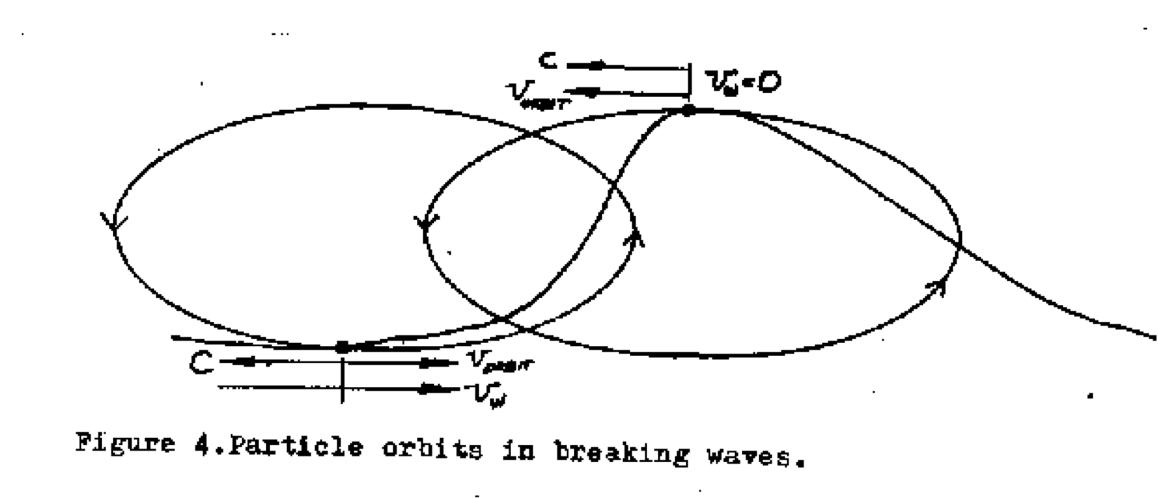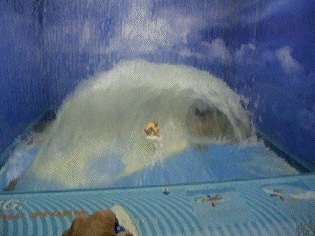Tip: To view the image full size from Netscape right click the
mouse and select View Image.
1.Use of sluice gate to generate a standing breaking wave

2. Layout of flume tank

3. Nosediving at the bottom of a wave (more of a problem
with surf skis and surfboats)

4. Planing craft trim data from NACA seaplane experiments
in the 1930s

5. Pitot tube and pressure gauge
mounted on a surfboard for estimating speed

6. Panoramic view of one of the
field experiments
(Scotts Head, New South Wales North Coast)

In a shoaling wave the water particle
orbits become ellipses

Thanks to my thesis supervisor, Bob Halliday, and the staff of
the old Hydro Lab.
One year later Peter
Killen (URL updated 7 Nov 06) undertook a similar, but
more sophisticated thesis at the Australian National
University. Peter used a plough shaped barrier to produce a
3D peeling breaking wave. The work was published in the
Journal of Fluid Mechanics in 1976 (see below). Peter kindly
cited my thesis work in that paper.
Peter subsequently built a full size standing wave system
which he could ride with a surfboard at the Department of
Mechanical Engineering, University of Queensland (circa
1979).
J. Fluid Mech. (1976), vol. 78, part 3, pp. 459-480
A stationary oblique breaking wave
for laboratory testing of surfboards
By H. G. HORNUNG AND P. KILLEN
Department of Physics, School of General Studies,
Australian National University, Canberra
(Received 7 May 1976)
Abstract
A surface gravity wave obliquely incident on a sloping beach
is broken near the beach and has a smooth surface
further out. Viewed in the frame of reference of
the transition from the smooth to the broken part, the flow is
steady, and the wave is oblique to the free
stream. By placing a suitably shaped obstacle in a
flume operated at high Froude number, such a wave can be
generated. Experiments in which a wave of 18 cm height was
generated are described and the wave shape and
some of its characteristics presented. In particular, the
dividing stream surface separating that part of
the flow which curls over into the break from the
part that flows smoothly over the obstacle is discussed.
Model surfboards can ride this wave unsupported, provided
the correctly scaled weight loads them at the
right centre-of-mass position. This makes it possible to
determine the forces on the board without a balance. A
comparison of the measured forces with
estimates, particularly of the drag, indicate that viscous
and surface-tension phenomena introduce only small scale
effects in the Froude number modelling. While
the results are not sufficiently accurate to draw definite
conclusions about the effects of surfboard shape, they
indicate clearly that surfboard flows may be
modelled with quantitative success in the laboratory.
Images from the J. Fluid Mechanics paper
Cross section of the laboratory wave

Desirable wave shape!

Picture of the laboratory wave with a model surfboard


